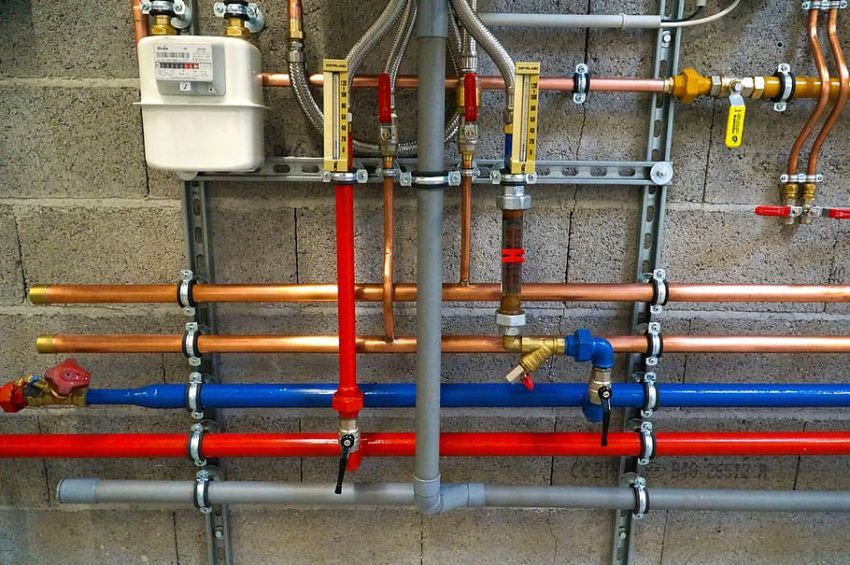The plumbing system is a vital component of any new construction project. A properly designed plumbing system is essential for both residential and commercial buildings, as it guarantees the smooth flow of water, effective waste removal, and overall optimal functionality of the space. This comprehensive guide will walk you through the key considerations and best practices for new construction plumbing, helping you create a reliable and durable plumbing system.
Plan and Design:
Begin by carefully planning and designing the plumbing system for your new construction project. Assess the building’s layout, number of fixtures, and intended use to determine the optimal placement of pipes, drains, and water supply lines. Ensure compliance with local building codes and regulations.
Selecting Plumbing Materials:
Select plumbing materials of superior quality that adhere to industry standards, ensuring exceptional durability and performance. Copper, PVC (Polyvinyl Chloride), PEX (Cross-linked Polyethylene), and CPVC (Chlorinated Polyvinyl Chloride) are among the frequently utilized plumbing materials. Consider factors such as cost, longevity, compatibility with local water conditions, and ease of installation.
Water Supply System:
Design an efficient water supply system that ensures a steady flow of clean water to all fixtures. Calculate the peak water demand based on the number of occupants and fixtures in the building. Determine the appropriate pipe size and pressure requirements to meet the demand. Consider incorporating water-saving fixtures and technologies for increased sustainability.
Drainage and Ventilation:
Proper drainage and ventilation are crucial to prevent clogs, odors, and sewage backup. Design a well-ventilated system that allows the smooth flow of wastewater and eliminates sewer gases. Install traps, vents, and properly graded drainage pipes to ensure efficient waste removal. Incorporate backflow prevention devices to safeguard the water supply from contamination.
Fixture Placement:
Carefully plan the placement of fixtures, such as sinks, toilets, showers, and appliances, to optimize functionality and convenience. Consider the proximity to water supply lines and drainage systems. Ensure compliance with accessibility guidelines, if applicable. Coordinate with other trades, such as electricians, to prevent conflicts during installation.
Proper Pipe Sizing and Installation:
Accurately size and install the plumbing pipes to accommodate the expected water flow and pressure requirements. Use appropriate fittings, supports, and hangers to secure the pipes and prevent leaks or sagging. Follow manufacturer guidelines and industry best practices for pipe installation techniques, including proper joint assembly and testing.
Inspections and Permits:
Schedule regular inspections at various stages of the plumbing installation to ensure compliance with building codes and regulations. Obtain the necessary permits and documentation for legal compliance. Work closely with local authorities and plumbing professionals to address any issues and ensure a smooth inspection process.
Plumbing Fixtures and Appliances:
Select plumbing fixtures and appliances that meet your design preferences, functional needs, and water efficiency goals. Take into consideration energy-efficient alternatives, such as low-flow toilets and faucets, which aid in water conservation and lowering utility expenses. Install fixtures according to manufacturer instructions, ensuring proper sealing and connections.
Final Testing and Maintenance:
Thoroughly test the entire plumbing system before occupancy. Check for leaks, proper water pressure, and functionality of fixtures. Educate occupants or homeowners about the proper use and maintenance of the plumbing system. Provide information on shutting off the main water supply and contacting professionals for repairs or emergencies.
Conclusion:
Designing and installing a new construction plumbing system requires careful planning, adherence to regulations, and collaboration with skilled professionals. By considering factors like layout, material selection, water supply, drainage, fixture placement, and proper installation techniques, you can ensure a reliable and efficient plumbing system for your new building. Regular maintenance and prompt repairs will help prolong the lifespan of the plumbing system, providing long-term functionality and peace of mind.

